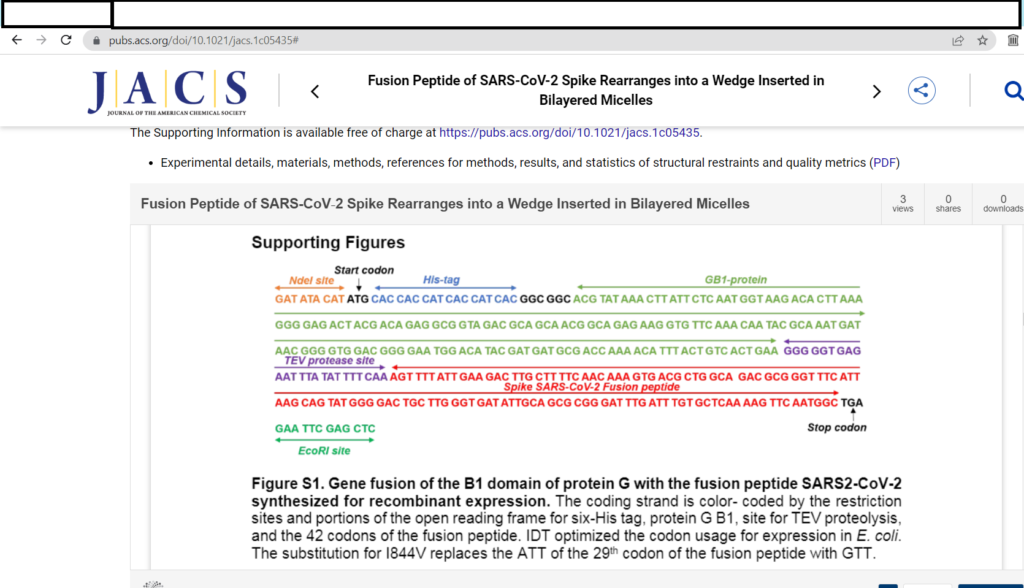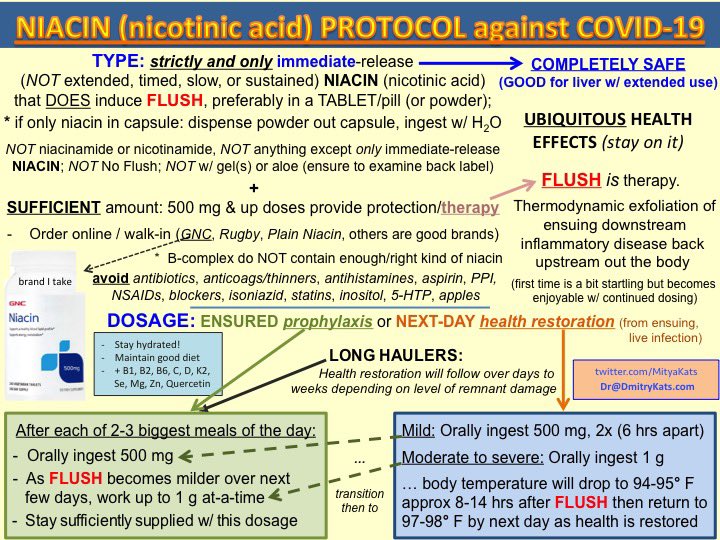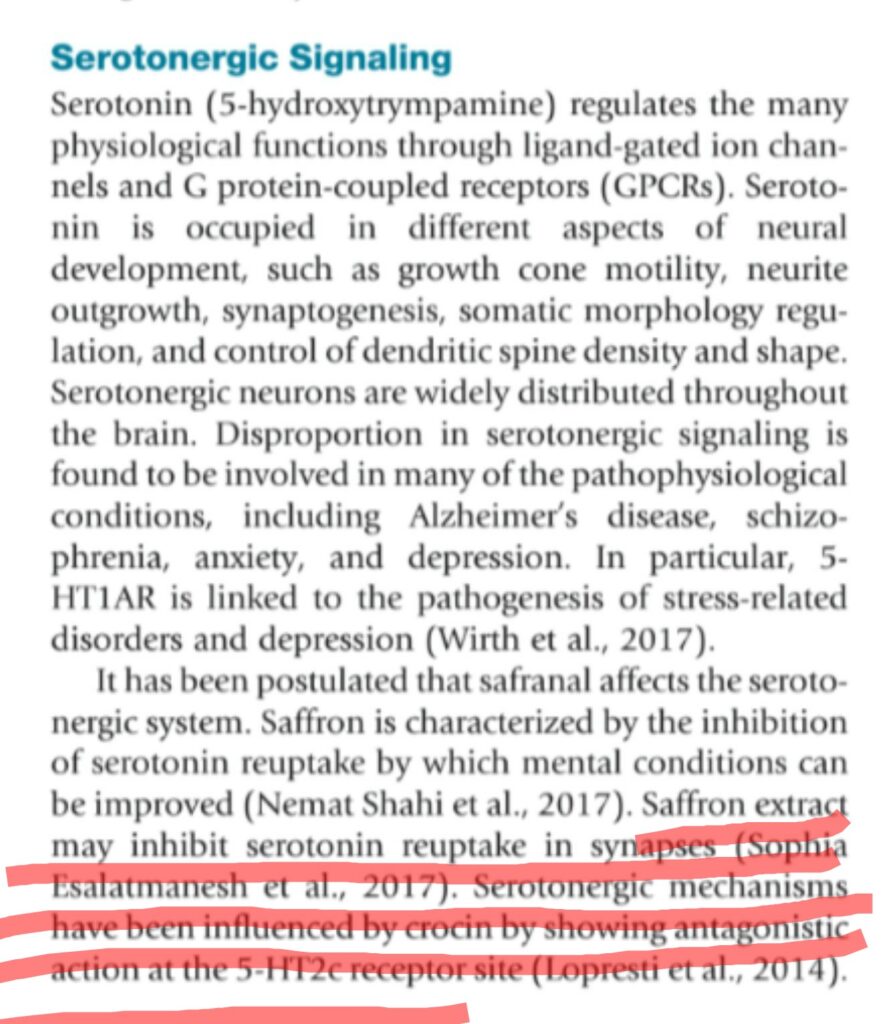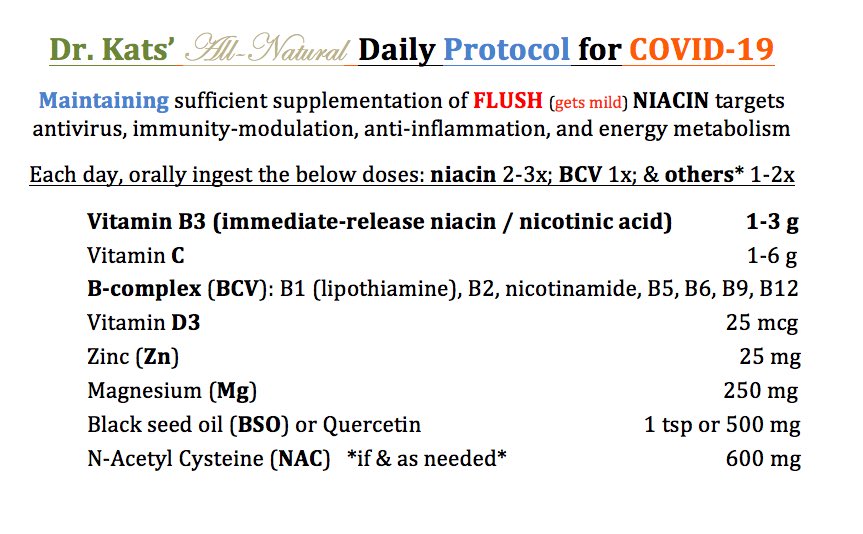Includes chimeric spike gene sequences involved in fusion entry of cells, and Ehden Biber’s latest post with FOIA information from Pfizer including the Omicron BA.1 (“Riltozinameran”) genetic sequence.
Hard to understand info for non-geneticists from Ehden – thanks for sharing maybe some geneticists will translate for us: The Sequence; We now have Pfizer’s Omicron BA.1 (“Riltozinameran”) genetic sequence, alongside other important information, thanks to a FOI request to the UK’s regulatory body, the MHRA. – by Ehden Biber – Sense of Awareness (substack.com)
I had just added a gene sequence image to something I had written, and was searching posts and not finding it (and getting frustrated ;-) when I remembered where it was – Gp41 in SARS-CoV-2 spike, so here we are back with the delicious and royal fruit.
Pomegranate is so awesome it can take on a multi-fanged genetic chimera:
1) Blocks entry at the ACE2 receptors and preserves ACE2 function.
Pomegranate peel extract blocks entry at the ACE2 receptor which also helps protect the function of ACE2 receptors, and pomegranate extract also inhibited “the activity of the virus 3CL protease.” (Tito, et al, 2020) Lung edema and other symptoms of severe Covid19 are also symptoms of lack of ACE2 function. As the infection spreads to cells with ACE2, the spike blocked receptor is dysfunctional. The juice/fruit likely helps but the peel is more potent, more concentrated in phytonutrients and has additional hydrolyzable tannins.
2) Inhibits NET formation, and inflammasome creation.
Inhibits NET formation (Kirchner, et al, 2013) which would promote inflammasome production – which kills good cells when it is an over-reaction. The SARS-CoV-2 virus spike protein, the E protein section, causes activation of NLRP3 Inflammasome creation, and the resulting increase in inflammation can also signal further creation of them. (Wong and Saier, 2021) An allergy like sensitization seems to occur. Macrophages from people who had been sick with COVID-19 reacted to exposure to the SARS-CoV-2 spike protein and inflammasome production occurred. Cells from people who had not been pre-exposed to SARS-CoV-2 did not react to cause inflammasome creation. (Theobald, et al, 2021)
3) Inhibits fusion of HIV-1 and entry into cells by membrane fusion. It may do the same for SARS-CoV-2.
*I am not sure if “HIV-1 entry inhibitor” is the same as fusion inhibitor for preventing the splitting of S1 from the S2 portion of spike. (Neurath, et al, 2004)
- “Punica granatum (Pomegranate) juice provides an HIV-1 entry inhibitor and candidate topical microbicide.” (Neurath, et al, 2004)
If it is, pomegranate phytonutrients could inhibit the fusion cleavage site from opening and freeing the S1 subunit which then can block nAChR function and has prion like domains and a galectin-3 like sequence. So, preventing S1 release would protect cholinergic function, reduce misfolded protein risks, and reduce risk of galectin-3 over-stimulating excess angiogenesis (blood vessel formation or doubling/splitting).
It was noted by (Wu Zhang and Leng Yap, 2004) that HIV-1 gp41 and SARS-CoV(1) S2 proteins are similar in structure. The gp41 protein helps HIV-1 fuse directly with cells in order to infect them, (Chen, 2019), which SARS-CoV-2 can also do. The S2 portion of spike forms a wedge like shape and directly invades a cell’s bilipid membrane layer for the purpose of membrane-to-membrane fusion with the viral particle. The sequence “GB1” is discussed and a Spike SARS-CoV-2 Fusion peptide, see Fig. S1. (Koppisetti, Fulcher, Van Doren, 2021) If pomegranate can prevent HIV-1 membrane fusion than maybe it is preventing separation of the S1 from the S2 subunit – more research is needed.

Background info by (Wu Zhang and Leng Yap, 2004) on the roles of the two parts of a coronavirus species’ spike protein – S1 (“cellular reception recognition”) and S2 (fusion of the viral and host cell membranes for entry):
“Coronavirus spike protein plays a very important role in virus entry, virus–receptor interaction, variations in host range and tissue tropism. The S proteins of majority of coronaviruses are cleaved into two functional subunits, S1 and S2. Liu et al. [1] indicated that the S protein of SARS-associated coronavirus (SARS-CoV) also forms S1 and S2 domains. The peripheral S1 portion is responsible for cellular receptor recognition, while the membrane-spanning S2 portion mediates the fusion of viral and cellular membrane, hence S protein determines the specificity of host and virulence of coronavirus [2]. Similarly, there are two non-valently associated subunits in the human immunodeficiency virus type 1 (HIV-1) envelope glycoprotein, gp120 and gp41, gp120 directs target-cell recognition and viral tropism through interaction with the cell-surface receptor CD4, while the membrane-spanning gp41 promotes fusion of the viral and cellular membranes so that viral contents are released into the host cell [3].” (Wu Zhang and Leng Yap, 2004)
The chimeric S1 subunit can be free and effect receptors elsewhere in the body or be released in exosomes in exhaled breath or sweat, and body fluids. It has the snake venom toxin-like nAChR cholinergic blocking effect and has a galectin-3 look alike sequence. Preventing S1 separation would reduce harm.
4) Acts as a modulator for inflammation & immune function,, promoting or inhibiting as needed for the situation.
Acts as a modulator and can increase Nitric oxide production if low or reduce Nitric oxide production if it excessive. Modulatory benefits for oxidative stress – pomegranate peel can help increase Nitric oxide by promoting eNOS (Delgado, et al, 2017), (de Nigris, et al, 2007a), (Wang D, et al, 2018), or reduce excess by promoting iNOS. (Kandeil, et al, 2019)
5) Protects against misfolded protein conditions.
Protects against misfolded protein conditions – the delphinidin (Noda, et al, 2002) and other anthocyanidins (Masci, et al, 2016), (Qu, et al, 2015) that give pomegranate its purple red hue, may help stabilize proteins as allosteric modulators and many phytonutrients or nutrients can act on receptors as agonists or reverse agonist (less often). (Silva, et al, 2019)
6) Promotes Nrf2 which helps promote DNA damage repair, glutathione production, and immune function.
Promotes Nrf2 which helps promote glutathione production, immune function, and DNA damage repair and inhibits inflammatory cytokines including IL-6 (Karwasra, et al, 2019) and NFkB. (Rasheed, et al, 2009). Nrf2 and pomegranate peel inhibit mast cell degranulation which would reduce inflammation, cytokines, and histamine. (Parisio, et al, 2020) Antihistamines tend to help in CoV treatment. Nrf2 inhibits mast cell degranulation by promoting SIRT4. (Hu B et al, 2020)
7) Contains potent antioxidants in addition to promoting Nrf2 and our own glutathione production.
Pomegranate peel contains potent antioxidants and diuretics (the tannins/EGCG/catechins) which help with detox – have several servings earlier in the day if ill and drink plenty of water, or once a day as a preventive.
The fruit juice and seeds provide some of the benefits for reducing inflammation and protecting the brain, but the peel contains more of the phytonutrients with potent antiviral and antioxidant function. Antioxidant power so strong, pomegranate peel extract can be used as an anti-corrosive for steel. (Rashid, et al, 2017) Too much is a pro-oxidant, use in moderate amounts. The diuretic effect is a clue when you may be getting too much, or just a good amount if puffiness is a problem.
8) Protects against liver, kidney, and brain damage risks from hyperinflammation.
Protects against liver, kidney, (Middha, et al, 2013) and brain damage risks from (spike) hyperinflammation. (Ahmed, et al, 2014) (Morzelle, et al, 2016) With a healthy microbiome, metabolites urolithin A and B can cross the blood brain barrier and reduce neuroinflammation. (Kujawska, et al, 2019) EGCG helps promote new growth of hippocampal cells. (Itika, et al, 2020) Urolithin A may be helpful against aging, metabolic dysfunction, IBD, and neurodegenerative disorders by promoting mitophagy and removal of defective mitochondria leading to improved health of mitochondria. (Singh, et al, 2022)
Species that help produce urolithin A and B may include Firmicutes, Clostridiales and Ruminococcaceae family and Akkermansia muciniphlia. Having more Bacteroides in ratio to Firmicutes was associated with non-production of urolithin A in response to 8 oz of pomegranate juice. A 500 mg supplement product, MitoPure, led to much greater increases in plasma levels of urolithin than the juice, in a crossover self-controlled clinical study. (Singh, et al, 2022)
Firmicutes are the main butyrate producing species, Ruminococcaceae also produce it, and Akkermansia muciniphlia produce other short-chain fatty acids. They are anaerobes fermenting undigested starches within the colon and the short chain fatty acids help feed the colon cells. (Parada Venegas, et al, 2019) *Probiotics provide species that populate the small intestines. We need to eat adequate resistant starches and zinc to support the anaerobe of the colon.
9) Improves gut health, membrane and cardiovascular health and promotes a beneficial microbiome balance of butyrate producing species.
Improves gut health, (Zhang, et al, 2017) membrane health, and cardiovascular health. (Wang et al, 2018) (Sadeghipour, et al, 2014) (Salwe, et al, 2015) . (Yang, et al, 2018) (Asgary, et al, 2017). Improved endothelial function in the placenta for a diabetic pregnancy animal model, eNOS -/- knockout mice and wild-type were used. (El-Sayyad, et al, 2019)
- Tip – think of skin health, gut health and blood vessel/cardiovascular health as all connected – similar tissue, slightly different issues.
Promotes balance between Firmicutes and Bacteroides species, butyrate producing microbial species in the gut. Excess Firmicutes is associated with obesity and excess Bacteroides with Inflammatory Bowel Disease. Pomegranate led to a decrease in Firmicutes in an animal-based study about a gut pathogen. (George, et al, 2019)
- “These results suggest that consumption of pomegranate polyphenols altered the microbiome, making it more resistant to displacement by infection with Cr, indicating that pomegranate polyphenols may mitigate the pathogenic effects of food‐borne bacterial pathogens.” (George, et al, 2019)
When we protect our gut, we are also protecting our brain, because they are connected via the large vagus nerve. It can act as a superhighway and allow chemicals to enter the brain from the gut or enter the gut from the brain. Parkinson’s Disease seems to involve this connection. Pomegranate peel extract helped a brain inflammation condition by modulation of the species in the gut. (Lu, et al, 2020)
- “Pomegranate peel extract ameliorates the severity of experimental autoimmune encephalomyelitis via modulation of gut microbiota.” (Lu XY, et al, 2020)
Promotes the microbiome. Sepsis – did not help in one animal model. Pretreatment for a month with pomegranate may have increased gut microbiome leaving the animals at increased risk of sepsis effects when surgery was performed. (Tavasoli, et al, 2014)

Summary: The juice/fruit provide many of these benefits but not all, the peel is more potent in the anti-viral & other benefits.
- Pomegranate peel extract blocks entry at the ACE2 receptors and preserves ACE2 function.
- Inhibits NET formation which leads to (killer) inflammasome creation.
- Inhibits fusion of HIV-1 and entry into cells by membrane fusion. It may do the same for SARS-CoV-2.
- Acts as a modulator for inflammation and immune function, promoting or inhibiting as needed for the situation – restoring balance.
- Protects against misfolded protein conditions (prions).
- Promotes Nrf2 which helps promote DNA damage repair, glutathione production, and immune function.
- Pomegranate contains potent antioxidants in addition to promoting Nrf2 and our own glutathione production.
- Protects against liver, kidney, and brain damage risks from hyperinflammation.
- Improves gut health, membrane and cardiovascular health; and promotes a beneficial microbiome balance of butyrate producing species.
- The juice/fruit provide many of these benefits but not all, the peel is more potent in the anti-viral benefits.
Ellagic acid/EGCG alternatives:
If pomegranate/peel is not available to you, then sumac/Zataar contains similar phytonutrients and so do Goji berries, and red raspberries a smaller amount and maybe black raspberries too: “The seeds of raspberries contained 87.8% of the ellagic acid,” (Daniel, et al, 1989), strawberries had more in the pulp than the seeds. Green tea also contains some of the catechin benefits ~ 3 cups per day provides about 200 mg of EGCG which is a typical amount found in supplements of EGCG. If gut issues are also an issue though, green tea may cause discomfort due to the oxalate content.
We should listen to Geert Vanden Bossche, PhD, DVM:
- Geert says we need to treat everyone prophylactically to stop breakthrough infections & slow the mutation rate. (substack.com) a post on my SubCtack links to his audio/post.
Early treatment works – we need to prophylactically treat everyone with the basic Z-Stack or preferred equivalent. Preventively taking supplements means you are treating somewhat at the first exposure. Then if signs of a cold occur, increase the vitamin C and anti-viral/iron chelators like quercetin, pomegranate peel product/tea and/or black seed oil.
I also include intranasal rinse or spray, and negative ionizers for air quality control in addition. Stop the exposure in the nose where the body has IgA antibodies that react against any coronavirus. Once the RNA species reach the lung, they have mutated somewhat and are harder for the body to fight.
Negative ionizers are something that should be in public places.
Anyone in power over a facility – please see what you can do to add it. CoV spike is positively charged and will clump and fall from the air. Sweep and mop more often. Part of the risk is the air above big crowds – think of it as a circulating swamp of everyone’s mutation variants, which then all can rapidly mingle and the whole swarm can quantumly it seems, all mutate to a new (worse) variant and make the whole crowd sick. Karl Sirotkin, PhD’s work.
- Golden Silkworms in Pandora’s Box – by Harvard2TheBigHouse (substack.com)
Pomegranate peel and fruit is an “antidote” for many diabolical features of the patented computer-generated sequence that is causing harm. It happens to be pomegranate season in the Northern Hemisphere. Are we collectively going to start using the fruit and peel for its full benefits? Or continue waiting for a rich person to suggest it? Or wait for Tedros and the WHO to use a little money to research pomegranate peel extract against SARS-CoV-2?
If you want medical doctor/researcher recommendations about the benefits of pomegranate, read this open access peer-reviewed book: Pomegranate, (IntechOpen), 2021. In a chapter on the antimicrobial benefits, Celiksoy and Heard did a phenomenal job creating extensive Tables of research trials showing antimicrobial potential of pomegranate peel extract or whole fruit extract. The Tables include which species were targeted using pomegranate extract of what dose, standardized to 13% ellagic acid, or other extraction method details are listed. (Celiksoy and Heard, 2021) It is just one Chapter in an open access peer-reviewed (long) book: Pomegranate, (IntechOpen), 2021.
Pomegranate and early treatment can work – if you use it.
It can’t work if you don’t use it.
Disclaimer: This information is provided for educational purposes within the guidelines of fair use. While I am a Registered Dietitian this information is not intended to provide individual health guidance. Please see a health professional for individual health care purposes.



